This post contains affiliate links.
Welcome to the world of backyard chicken keeping! As a seasoned chicken owner, I know that the coop is a home and the sanctuary for your feathered friends. Whether you are just starting out or looking to upgrade your setup, choosing the right chicken coop is crucial for a happy, healthy flock. In this article, I will canvas through the essentials of coop size, location, security, and style to ensure your hens have the perfect home. Let us find the ideal coop for your space!
Planning Your Chicken Coop for Space Efficiency
As a committed backyard chicken keeper, I know that choosing the right coop design is crucial, especially when you are trying to maximize space efficiency in your garden or backyard. When you are planning for a proper coop, consider the size of your flock and also the size of your space.
A compact coop is a fantastic solution for those with smaller plots, ensuring your feathered friends have a comfortable home without overwhelming your outdoor area. When looking into small coop options, pay attention to vertical designs which offer more living area in a smaller footprint. That way, your chickens will enjoy both roosting and foraging areas without cluttering your space.
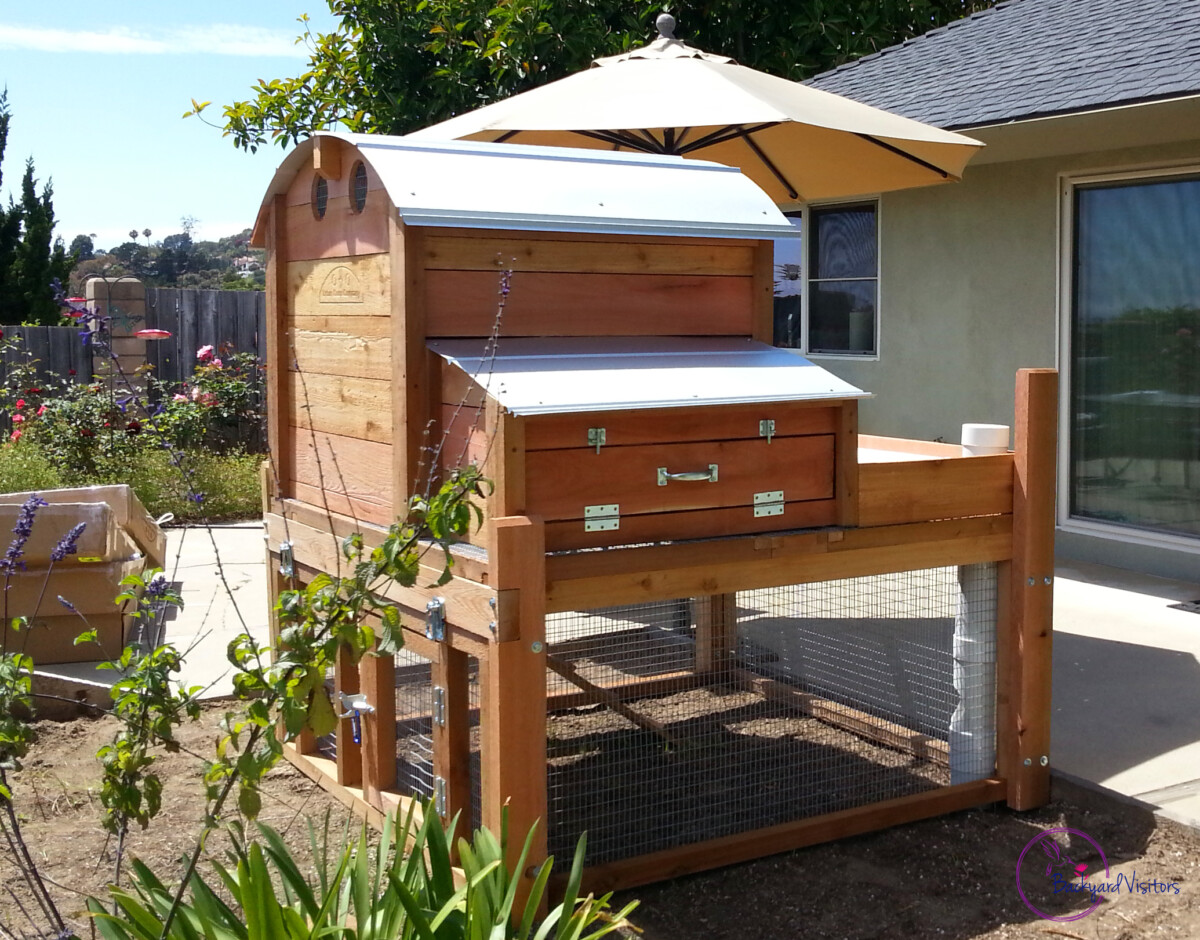
A little more expensive, but worth every penny!
Even the most space-constrained locations can become your flock’s cozy haven with a well-designed coop space. Remember, the key to space efficiency lies in the square footage of the coops and how ingeniously you utilize every inch of your space.
Read my other related articles:
- Creating the Perfect Home for Your Backyard Chickens
- The Importance of Proper Ventilation and Lighting in Coops
- Predator Proofing Your Chicken Coop: Tips and Tricks
- Must-Have Features for Your Chicken Run
- Common Mistakes to Avoid in Coop Design
- How to Ensure Your Chickens Stay Happy and Healthy in Their Coop
Understanding Chicken Coop Size Recommendations for Your Flock
Chicken coop size is paramount for the wellbeing of your flock. Whether a novice or a seasoned poultry keeper, it is critical to understand and provide a coop that meets the minimum coop space requirements.
The general rule of thumb suggests that inside the coop, each chicken should have 3 to 4 square feet to ensure they are not cramped. Similarly, outdoor run space should be at least 8-10 square feet per chicken. These coop sizes help prevent stress, mitigate health issues, and encourage natural behaviors.
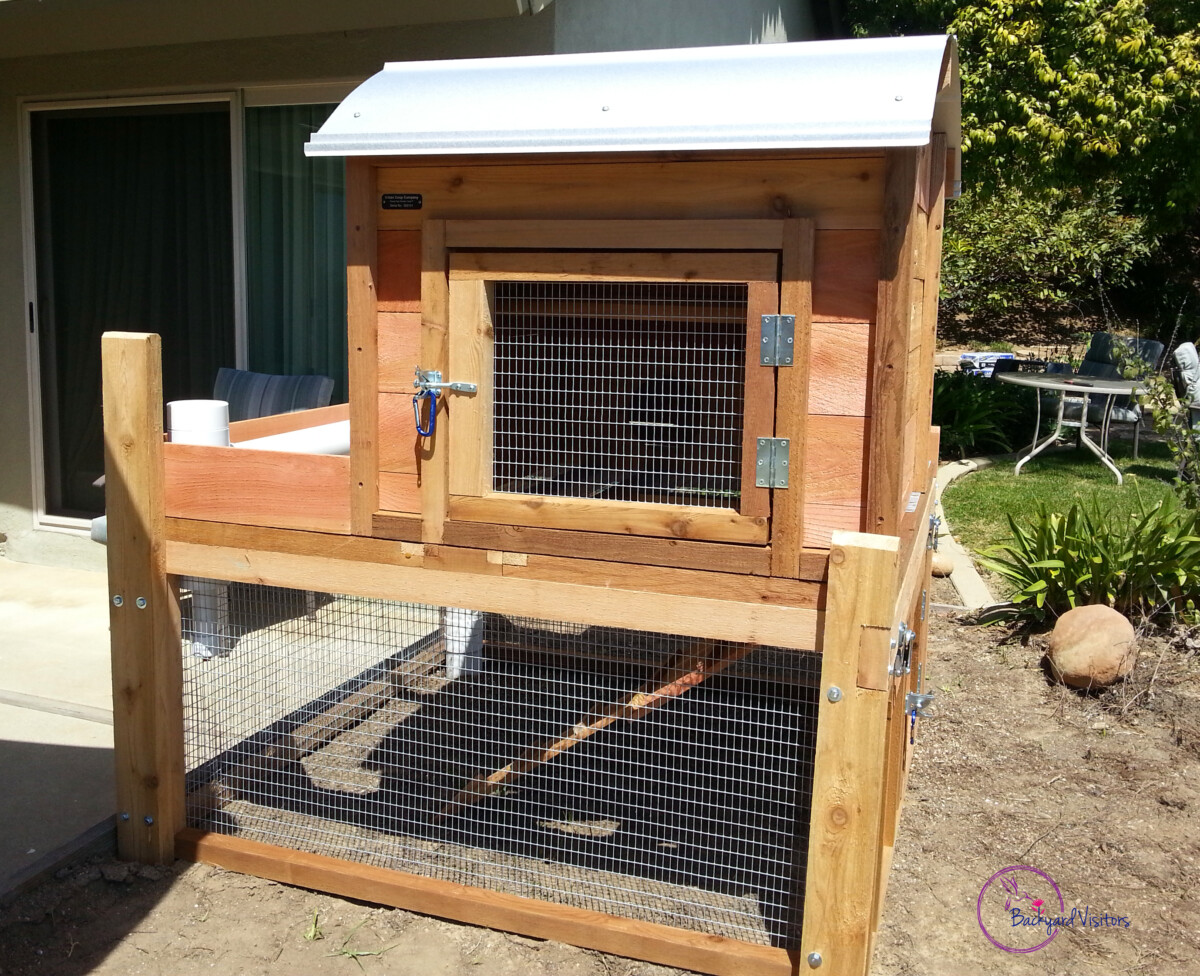
If your flock consists of more sizable breeds, you will need to upsize accordingly. Conversely, Bantams require less space. Coop space is about the size and quality living conditions that keep your flock happy and healthy.Calculate the right chicken coop size that meets their needs.
How to Choose the Best Chicken Coop for Your Chickens’ Needs
After meticulously planning your backyard essentials and grappling with the ideal space-efficiency, the next step is choosing the best coop that meets your chickens’ needs. It is about the aesthetics and also selecting a haven that provides comfort, security, and the room your feathered friends deserve.
Choosing the right chicken coop is not a task to take lightly; this is the space where your chickens will roost, lay their eggs, and seek shelter from the elements. If you are mulling over which chicken coop to bring into your yard, consider the breed and number of chickens, as this directs the proper sizing and functionality needed.
My chicken coop provides two roosting bars so that all of my chickens have ample room to stretch their wings, and feel comfortable when resting and sleeping.

Cuckoo Maran (Duckey), and Ameraucana (Molasses)
Remember, the best chicken coops are not one-size-fits-all. Your coop should be a culmination of careful thought, catering to the specific needs of your flock. You will want to ensure there is ample space for each bird and easy access for cleaning and egg collection. The journey to the perfect coop starts with understanding your chickens and ends with a choice that supports their happiness and health.
Assessing Coop Sizes: Ensuring Adequate Space for Your Hens
When selecting the ideal coop size, the golden rule is to remember that the right coop size significantly impacts your hens’ happiness and productivity. Always aim to provide adequate space for your flock to flourish.
Generally, each hen should have at least 3 to 4 square feet inside the coop, and approximately 8-10 square feet in an outdoor run. This ensures they have enough space to roost, nest, and forage without overcrowding, which lead to stress and behavioral issues.
When considering the size of the coop, factor in the space needed for feeders, waterers, and for you to move around comfortably during maintenance and egg collection. Larger coop sizes afford more space, however, make sure it fits well within your backyard without overwhelming the area.
Adequate space per bird is the minimum; if you can provide more square feet, your hens will surely appreciate the extra room to spread their wings!
Five most common commercial prefabricated coop sizes to accommodate two to twenty chickens.
- Small Coop (2-5 Chickens): Measures around 5′ x 5′
- Medium Coop (5-8 Chickens): Commonly around 6′ x 8′
- Large Coop (9-12 Chickens): Often sized at approximately 8′ x 10′
- Extra Large Coop (13-15 Chickens): Usually around 8′ x 12′
- Extra-Extra Large Coop (16-20 Chickens): Generally measures about 10′ x 16′
Importance of Location: Placing Your Chicken Coop Strategically
Choosing the right location for your chicken coop is not just a matter of convenience; it is crucial to the health and happiness of your chickens. The importance of strategic placing of the chicken coop cannot be overstated — a coop that is positioned poorly leads to problems ranging from high stress in your flock to over-exposure to the elements.
When considering the location for your coop, consider protection from predators, ease of access for cleaning, and proper ventilation. If you place your coop under a tree, for instance, you will get shade and protection, but may also deal with incessant droppings or branches that fall during a storm.
Placing your coop in a strategic location also means considering sun exposure. Too much sun and your hens will overheat; too little and they will not lay as efficiently.
Always remember, when choosing a location for your coop, you are deciding where to put a structure and you are creating a home for your flock. Take the time to assess all the potential sites to ensure a happy, productive environment for your feathered friends.
My chicken coop is placed inside a chicken run that uses one side of my house as a wall and is fenced on three sides. It faces east therefore gets the soft morning sun until mid-day when it gets approximately 3 hours of afternoon sun which allows my chickens to bask in the sun and take dirt baths.
Choosing the Ideal Spot for Your Chicken Coop for Predator Protection
When getting ready to select the best coop for your chickens, consider predator protection as crucial as the coop’s design itself. It is imperative to choose an ideal location that guarantees the safety and well-being of your chickens.
First things first, your chicken coop should be stationed in a location that is elevated and well-drained to prevent predators and moisture from becoming a menace. Additionally, ensure that your chosen location is not hidden away in a corner of your garden where predators can lurk undetected. A good line of sight deters unwelcome visitors and gives you a clear view of any potential threats.
If you have assessed coop sizes and planned meticulously, you will not want to negate all that hard work by placing your coop in a vulnerable spot. Remember, when strategizing the best place to site your chicken coop, visibility, and accessibility for you—but not for predators—is key. Ultimately, by placing your chicken coop strategically, you are laying the groundwork for robust protection against predators and ensuring a happy and productive flock.
My chicken coop is placed against the back wall of my house and between two strategically placed Pink Lady Indian Hawthorn. This protects my chickens since there is not enough space for a predator to swoop down then have enough space to regain height to loft.
The chicken coop is also placed on a concrete slab to prevent any predators from digging under the coop to access my chickens. The coop is protected with 16 gauge galvanized hardware cloth to prevent predators from attempting to claw or chew through the wire. The doors are locked at night using a carabiner that is possum proof. The ladder inside the chicken coop under the roosting bars is lifted with the pull of a rope from the outside and secures the chickens safely for the night.
Incorporating Human Access & Storage into Your Coop Design
When choosing the best chicken coop for your feathery friends, incorporating human access into your coop design is just as convenient and is essential. You will thank yourself later for making it easier to slip in and out for daily chores and health checks.
For my backyard situation, my compactable chicken coop helped me to save space, however one of the downsides is that the human access area is limited and low to the ground for someone to clean out the coop easily. I would have preferred a coop design with a taller space to make my job a lot easier when cleaning the coop.
Think about the layout of your coop; a walk-in design with plenty of headroom will save you from backaches and the awkward chicken dance we have all done while squeezing into tight spaces.
Building or selecting a coop with built-in storage for feed, bedding, and tools is a real game-changer, keeping everything tidy and at arm’s reach. Remember, the aim is to optimize your design for both your needs and the comfort of your chickens.
Do not overlook the importance of coop accessibility; a well-placed door prevents a world of hassle. Lastly, incorporating access points for cleaning and maintenance ensure that your chicken haven remains the picture-perfect abode the flock deserves.
Vital Ventilation: Planning for Healthy Airflow in Your Chicken Coop
When mulling over the nuts and bolts of coop design, do not forget that vital ventilation is at the forefront of nurturing a thriving flock. Prioritizing coop ventilation in your chicken coop is important to keep odors at bay and to ensure that your beloved birds bask in fresh, clean air.
A well-ventilated coop slashes the risk of respiratory issues in chickens, which is why planning for healthy airflow is a non-negotiable aspect of coop construction. Envision a coop that breathes life into your flock every day with strategically placed vents that drive out dampness and drag in the crisp country air.
It is essential to engineer the chicken coop in a way that allows air to circulate freely, yet shields your feathered friends from drafts during the chillier seasons. By weaving ventilation into the fabric of your chicken coop plans from the beginning, you ensure that your hens have the fresh, healthy atmosphere they deserve—because in the end, happy hens mean a happy henkeeper.
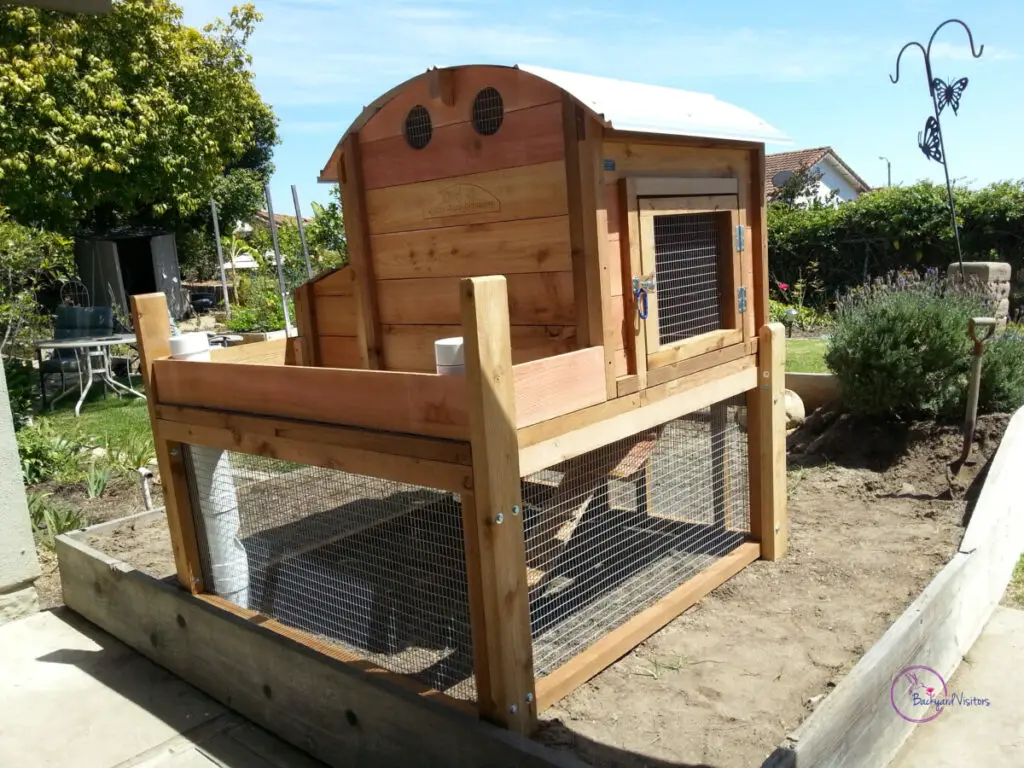
contaminated air to escape.
It is placed on top of a concrete slab for predator protection and easy cleaning.
Choosing the Right Flooring Materials for Their Chicken Coop
When choosing the right flooring materials for your chicken coop, it is crucial to consider the proper substrate that ensures both comfort and cleanliness for your chickens. The right materials make a significant difference in the maintenance and health of your flock.
A good rule of thumb is to choose the right absorptive and easy-to-clean flooring material options, such as wood or pine shavings.
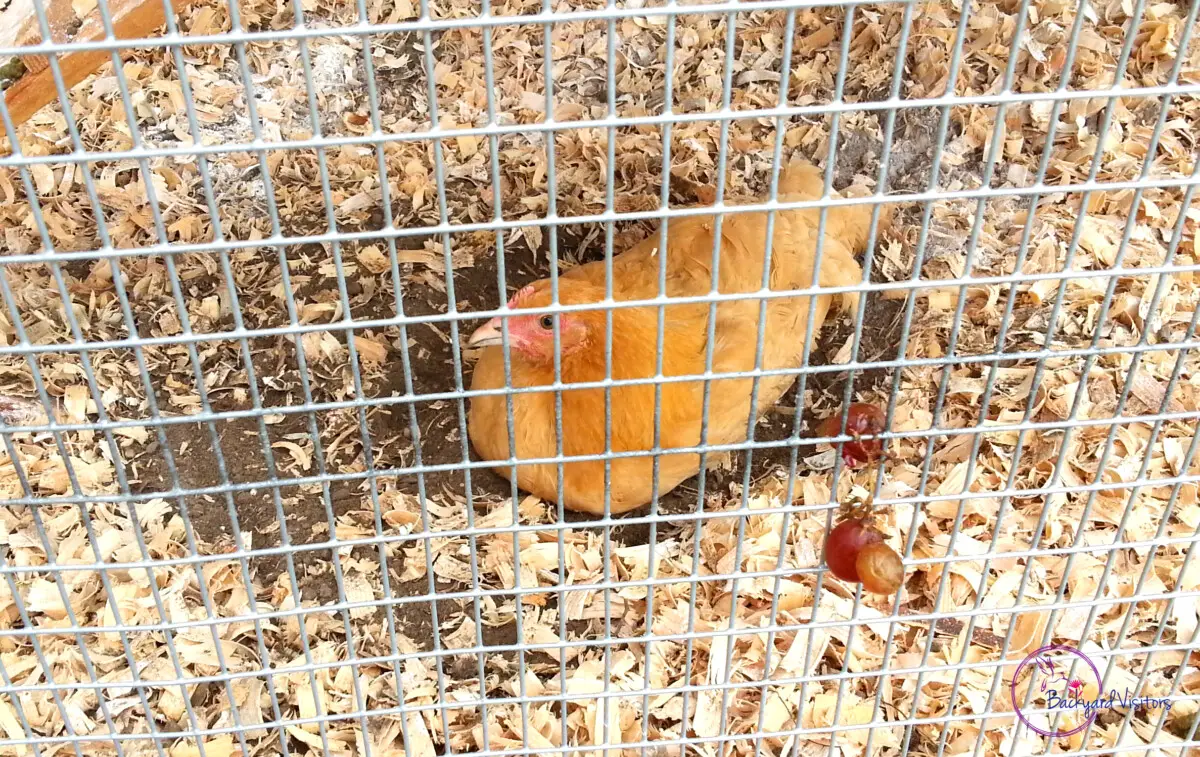
Whether your coop is nestled in a shaded area or basking in sunlight, the flooring materials should facilitate adequate drainage and prevent dampness, which lead to disease or discomfort for your chickens.
Planning for human access is just as important; the right materials will make it easier to clean and maintain the coop effectively. Their comfort and your convenience must align. When selecting materials, consider durability and lifespan to ensure that you are not replacing the flooring too frequently.
In essence, your chicken coop requires flooring that upholds the overall health and happiness of your chickens, while meshing seamlessly with the design elements from predator protection to ventilation and space efficiency you have so carefully considered in your backyard sanctuary.
Roosts and Comfort: Designing a Restful Area for Your Chickens
When designing a chicken coop, it is crucial to integrate comfortable roosts for your chickens. Roosts are a perch and a spot where your birds will huddle for warmth and sleep safely off the ground.
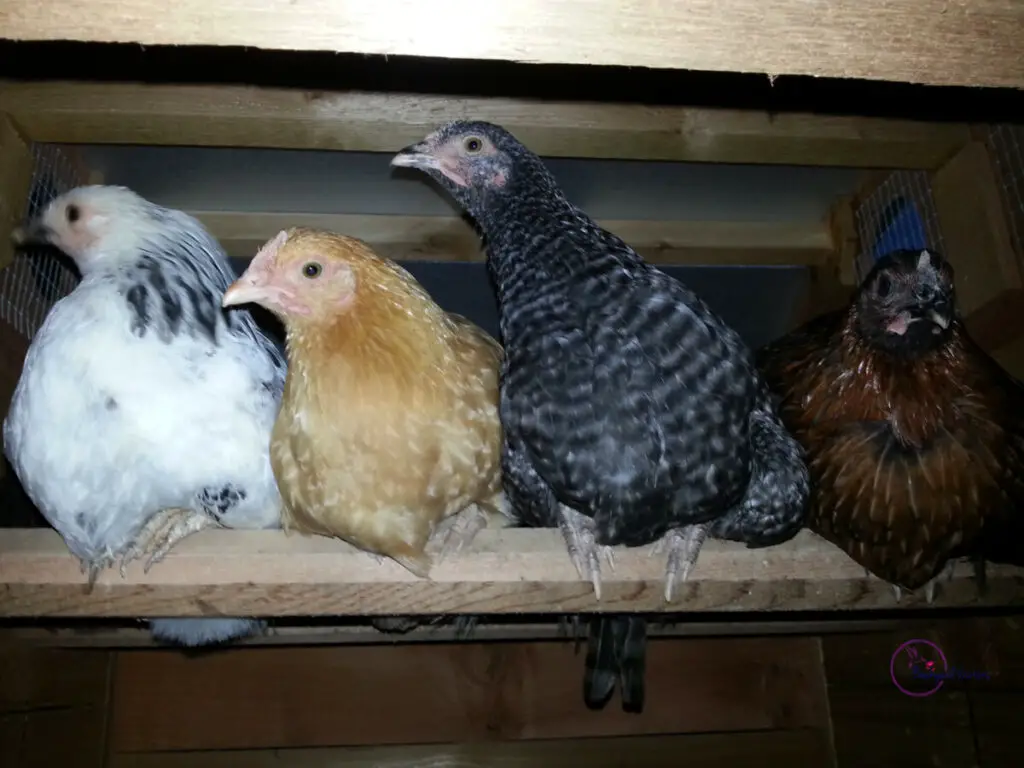
The design should allow every chicken to have their own space, preventing pecking order squabbles. Ensure the roosts are positioned so droppings fall away from the feeding and nesting areas to maintain hygiene and comfort. A well-designed coop reflects the understanding that restful areas are vital for your birds’ well-being.
Contemplate the coop’s layout to ensure that your chickens’ roosts are in the calmest part of the coop, away from the hustle of daily activities. Crafting a restful area in your coop, essentially a bedroom for your chickens, lets them roost in peace. When you prioritize their comfort, you are ensuring contented chickens, and happy chickens lay more eggs. A coop is about the number of chickens it can hold along with the quality of life you provide for your flock.
The Convenience of Cleaning: Coop Design with Maintenance in Mind
When designing your chicken coop, it is crucial to factor in the convenience of cleaning. A coop that is a breeze to maintain ensures a healthier environment for your feathered friends. The right coop design significantly reduces cleaning time while maximizing the chicken’s hygienic conditions.
Consider a coop with features that promote convenience, such as removable dropping trays and large access doors, to make the daily scoop-out a swift task. Easy-to-clean surfaces enhance the cleanliness of your coop, preventing pests and diseases from taking hold.
Envision a layout that allows you to enter the coop comfortably to reach all the nooks and crannies. By investing in a coop tailored towards ease of maintenance, you will spend less time with a shovel in hand and more time enjoying the antics of your backyard flock. A clean coop is a happy coop, and prioritizing cleaning in your coop design pays dividends in the long run, ensuring both the welfare of your chickens and your satisfaction as a poultry keeper.
My compactable chicken coop helped me save space in my backyard, but one drawback is that it has a small, low-to-the-ground human access area that makes it difficult for someone to clean out the coop. To make cleaning the coop much easier, I would have chosen a coop design with a taller room.
Top ten features a chicken coop should have to make it easy for a human to clean and access.
- Wide Doors: Ensure the coop has large doors that are easy to open, allowing humans to enter comfortably for cleaning and maintenance.
- Removable Flooring: Install flooring that can be easily taken out and cleaned, such as sliding trays under roosting areas to catch droppings.
- Good Ventilation: Incorporate multiple ventilation points to help air circulate, reducing moisture and ammonia buildup which makes cleaning easier.
- External Nest Box Access: Design nest boxes that can be accessed from outside the coop so eggs can be collected and cleaning conducted without disturbing the birds.
- Smooth Surfaces: Build the interior with smooth surfaces and no hard-to-reach corners to simplify wiping down walls and prevent pest infestations.
- Waterproof and Durable Materials: Use materials that withstand moisture and are easy to hose down, such as metal or plastic, for both the interior and exterior.
- High-quality Latches: Install robust latches that are easy to operate for both opening and securely closing doors and panels.
- Elevated Design: Raise the coop off the ground to prevent pests from entering and to facilitate cleaning underneath.
- Ample Light: Ensure sufficient natural or artificial lighting inside the coop to aid visibility during cleaning sessions.
- Organized Storage: Include built-in storage areas for tools and cleaning supplies conveniently located for easy access.
Nesting Boxes: Choosing the Proper Size and Quantity for Your Coop
When choosing nesting boxes for your coop, the proper size and quantity are essential for the comfort and productivity of your chickens. Each hen requires a snug and secure place to lay her eggs, so ensure that each nesting box is spacious enough.
The general rule of thumb is to provide at least one nesting box for every three to five hens.
Some hens may prefer to share nesting boxes, while others may prefer their own space. Depending on the temperament and pecking order of your flock, you may find that slightly more boxes alleviates overcrowding, competition or stress.
My 5 chickens share three nesting boxes but often fight over one specific nesting box. They must think that if they fight over a nesting box, it must be the best location.
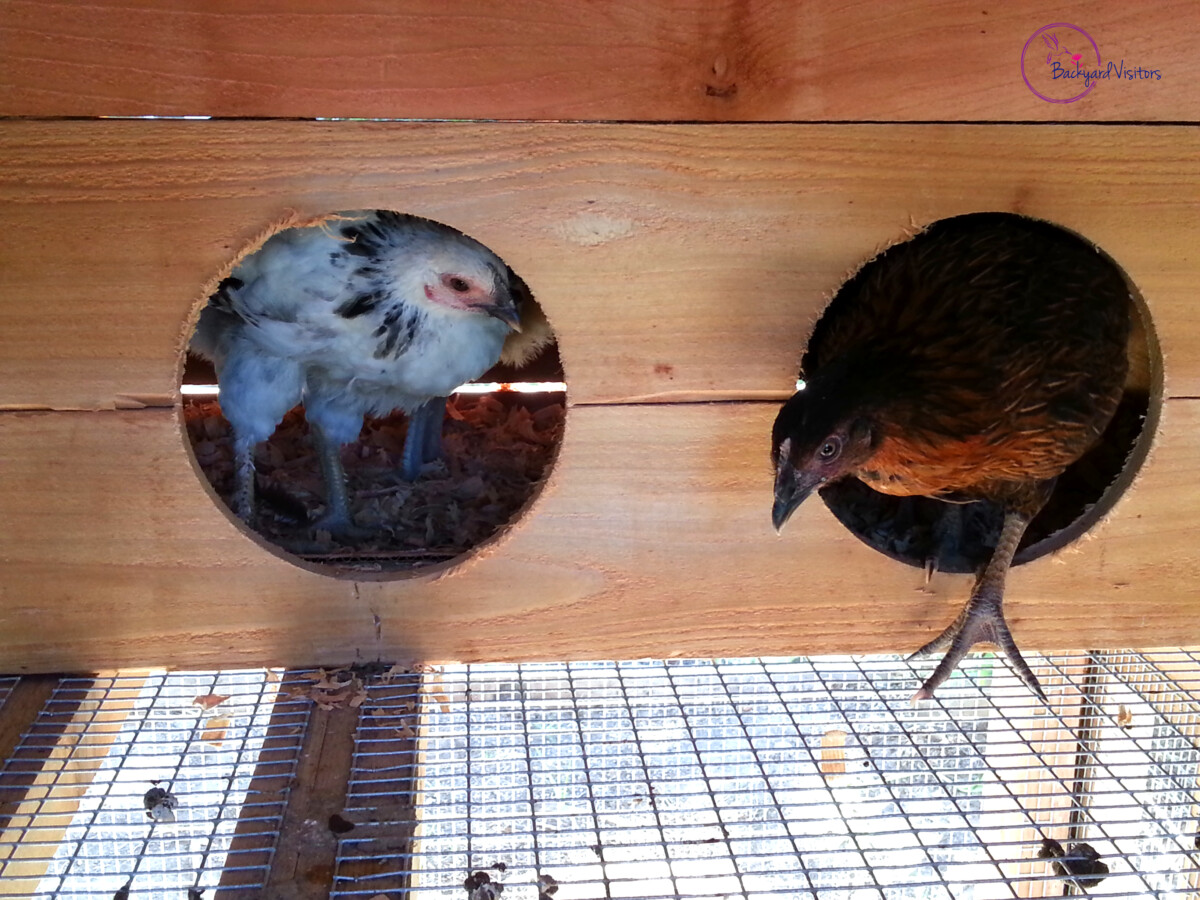
Providing enough nesting boxes helps prevent overcrowding, which leads to stress and potential issues such as egg eating or broodiness. Additionally, having multiple nesting boxes helps reduce competition and ensures all hens have access to a clean, quiet place to lay their eggs.
The size of your chicken coop also dictates the number of nesting boxes you can realistically include without compromising on crucial space for roosting and movement. A box measuring 12”x12”x12” works well, however larger breeds may need more space.
As you decide on the right size and quantity for your flock’s nesting boxes, remember that placement within the coop is just as important. They should be positioned in a quiet, dimly lit area to encourage laying and to keep eggs clean and safe. Ultimately, the well-being of your chickens depends on a balance of spaciousness, privacy, and security in their nesting arrangements.
Selecting a Chicken Run: Essential Outdoor Space for Your Chickens
When selecting a chicken run, remember that it is an essential component of your chicken coop. Not only does it provide vital outdoor space for your chickens to forage and exercise, but it also enhances the overall well-being of your flock.
When you select the right size and design, your run becomes a sanctuary that allows natural behaviors to flourish while also keeping predators at bay.
A proper run should seamlessly integrate with your coop, ensuring that your feathered friends have a safe accessible sanctuary area to enjoy the sunlight and allowing for natural behaviors to flourish while keeping predators at bay. If you are handling tight quarters, do not fret; maximizing a small space for a chicken run can be done creatively with vertical elements and thoughtful planning.
Ensure that you account for headcount—each of your chickens needs enough room to spread their wings and strut their stuff. Whether you are dealing with a stand-alone run or attaching it directly to your chicken coop, take the time to select a structure that complements your space and gives your hens a slice of the great outdoors they deserve.
Considerations for Connecting the Chicken Run to Your Main Coop
When considering connectivity between your chicken run and the main coop, there are several crucial considerations to ensure the health and safety of your chickens.
The run should be easily accessible from the coop for the birds, allowing them free movement between the spaces. This promotes exercise and reduces stress for your flock. In connecting the chicken run to your main coop, the design must prevent predators from exploiting any weak points, so durability and security are key.
The positioning of doors and access points between the coop and run should be convenient for your birds, and also designed to streamline your routine, making it easier to manage your chickens’ environment.
Consider if the run provides adequate protection from the weather elements while allowing plenty of natural light – an essential aspect for your chickens’ health.
Lastly, maintaining connectivity should not compromise the structural integrity of your chicken coop; the entire setup needs to stand firm against external threats while offering a sanctuary for your avian friends. Always remember, the success of your backyard farm rests on the wings of a well-thought-out habitat for your feathered companions.
Check out my other posts on Backyard Chickens
Frequently Asked Questions
Q: How much space do I need inside my chicken coop per chicken?
A: Inside your chicken coop, you want to aim for providing each chicken with 3 to 4 square feet to prevent them from feeling cramped. For larger breeds, increase this space accordingly, while bantams will require less. Quality living conditions are essential, so ensure you are meeting these minimum space requirements.
Q: What should I consider when choosing the location for my chicken coop?
A: When selecting the right spot for your coop, think about predator protection, drainage, access for cleaning, ventilation, and sunlight exposure. You want a location that’s elevated, well-drained, and where you can easily see the coop to spot any potential threats. Ensure the site is protected from harsh weather while providing proper sun exposure for your flock’s well-being.
Q: How can I ensure my chicken coop is easy to clean and maintain?
A: Opt for a chicken coop design that features removable dropping trays, large access doors, and easy-to-clean surfaces. This will make your regular cleaning routine much more manageable. Additionally, choose a layout that allows you to comfortably enter the coop, ensuring you can reach all areas for thorough maintenance.
Q: What do I need to know about creating an outdoor run for my chickens?
A: When planning an outdoor run, ensure each chicken has at least 8-10 square feet of space. The run should offer safe, accessible outdoor space attached or near the coop, protected from predators, and allowing chickens to indulge in natural behaviors. If working with limited space, use vertical designs to provide more area while maintaining a compact footprint.
Q: How many nesting boxes do I need, and what size should they be?
A: A standard guideline is to have one nesting box for every three to four hens. Depending on your chickens’ pecking order, you might require more boxes to prevent stress. Each box should be around 12”x12”x12” in size, but larger breeds might need more space. Situate nesting boxes in quiet, darker areas of the coop to encourage laying and keep eggs safe.
Happy Backyard Chicken Raising!
Backyard Visitors is a participant in the Amazon Services LLC Associates Program, an affiliate advertising program designed to provide a means for sites to earn advertising fees by advertising and linking to Amazon.com. We also participate in other affiliate programs which compensate us for referring traffic.

